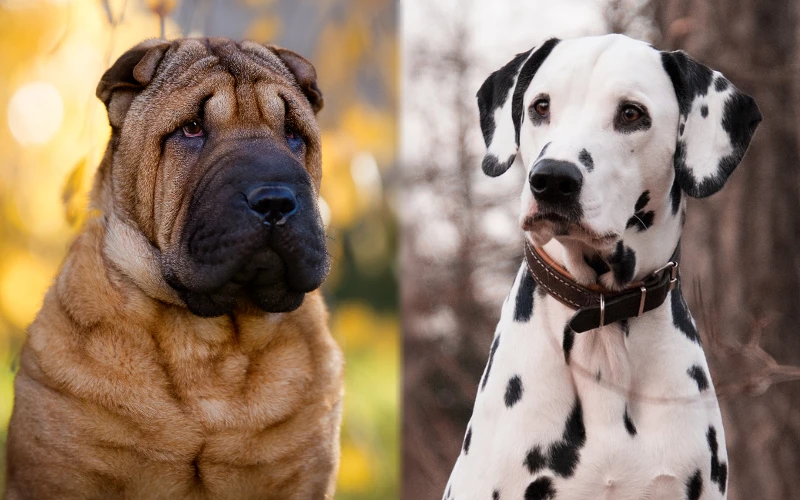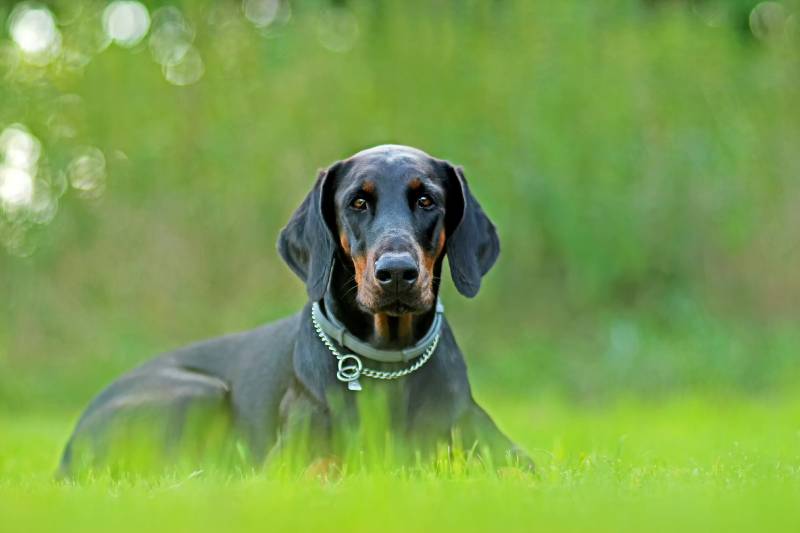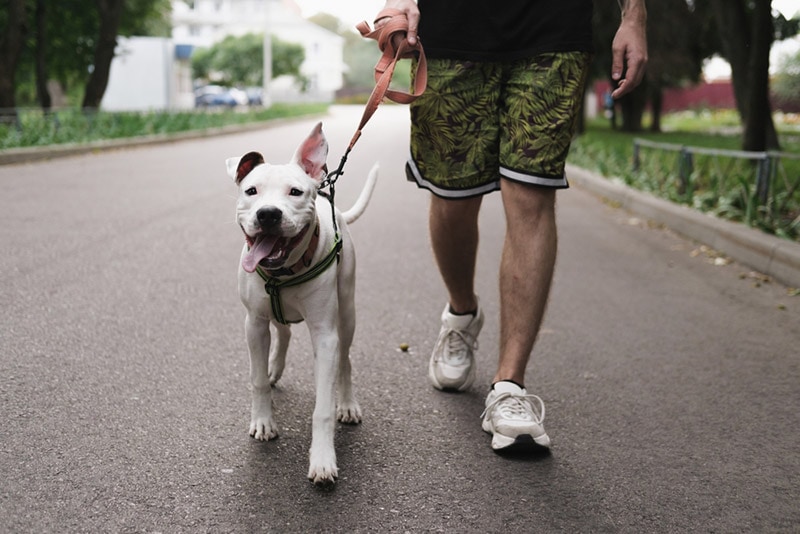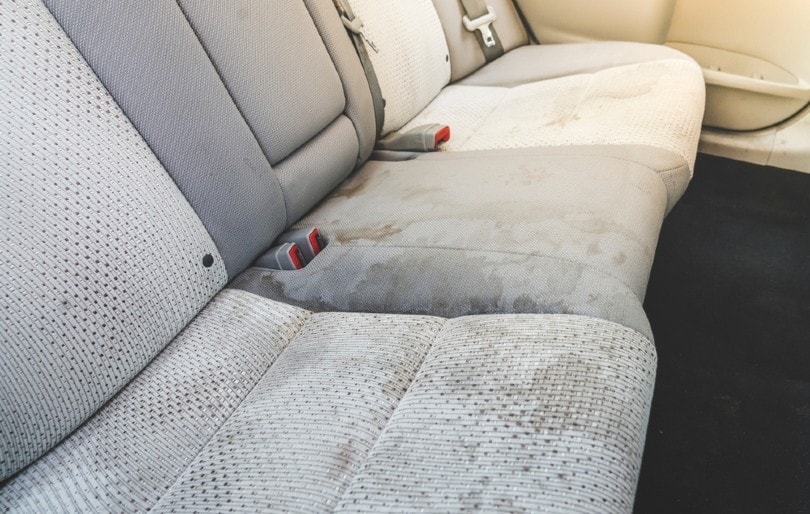Sharmatian (Shar Pei & Dalmatian Mix): Pictures, Care Guide, Temperament & Traits
By Jordyn Alger
Updated on

Click to Skip Ahead
It’s not that strange if you’ve never heard of the Sharmatian. Sharmatians are a mix between the Shar-pei and the Dalmatian and are a relatively new breed. They are considered designer dogs and can inherit the unique physical features of both parents, such as the Shar-Pei’s wrinkles or the Dalmatian polka-dots.
| Height: | 18–24 inches |
| Weight: | 45–70 pounds |
| Lifespan: | 8–13 years |
| Colors: | White, black, red, fawn, cream, spotted, brindle, merle |
| Suitable for: | Active families, families with older children, experienced dog owners |
| Temperament: | Intelligent and independent, dignified, loyal, affectionate with family |
While designer breeds can be somewhat inconsistent in terms of personality, the Sharmatian is generally considered an intelligent, active, and loyal companion. If you think a Sharmatian may be the right fit for you, you will want to learn more about this unique mixed-breed dog before bringing it home. The Sharmatian has several outstanding qualities; however, it is not the right pet for every household.
This guide will help you determine whether or not the Sharmatian is right for you. If you decide you have the experience and resources to support a Sharmatian and allow it to thrive, you will find an incredible companion in this special dog.
Sharmatian Breed Characteristics
Sharmatian Breed Puppies
The Sharmatian is considered a designer dog. It’s a relatively recent mixed breed, so there may not be as many breeders specializing in Sharmatians. However, you may have a better chance of finding one at your local animal shelter. You can adopt a Sharmatian for around $150 or whatever your local shelter’s adoption prices are. Some shelters include vaccinations, deworming, and microchipping with the purchase.
You may be able to find a breeder who specializes in Sharmatians, but take caution if you decide to go this route. Since Sharmatians are designer dogs, unethical breeders may try to take advantage of the Sharmatians’ unique physical features to make a profit while caring very little for their genetic health. Always request genetic health tests of your prospective puppy’s parentage. If the breeder refuses to provide that information, you should look elsewhere.
Sharmatian puppies tend to be energetic, so you must be prepared for an overly active puppy. Make sure you have everything you need to help your puppy burn off some energy, such as a collar and leash, durable toys, and tasty training treats.

Temperament & Intelligence of the Sharmatian 🧠
The temperament of your Sharmatian may vary depending on which parent it takes after more. Both breeds are loyal, intelligent canines with an independent streak. They both have origins as working dogs, so they enjoy having tasks to do.
The variation may come in with your Sharmatian’s disposition. Shar-peis tend to be calm and relaxed, whereas Dalmatians are more playful. Dalmatians need more mental stimulation and entertainment than Shar-Peis, making them more suitable for high-energy families. So, the temperament of your Sharmatian will depend heavily on whether it is more like the Shar-Pei or more like the Dalmatian.
Are These Dogs Good for Families? 👪
Sharmatians love their families, and Shar-Peis and Dalmatians are endlessly devoted to their loved ones. They are highly affectionate with their families and do not like being left out of family activities, so be sure to plan many canine-friendly adventures.
The Sharmatian is moderately good with children, but proper socialization is essential to teach this breed how to interact with smaller children. Any interactions between you and your Sharmatian should always be supervised; they can be powerful dogs that do not understand the full extent of their strength.
Does This Breed Get Along with Other Pets?
Sharmatians will tolerate other pets, but there are other dogs that get along with other animals better. The best way to introduce a Sharmatian to other pets is to do so when your Sharmatian is a young puppy. Since Shar-Peis were used as hunting dogs in the past, they can have a strong prey drive, making them less compatible with smaller animals such as rodents and young cats.
Things to Know When Owning a Sharmatian:
Food & Diet Requirements 🦴
Sharmatians will thrive with high-quality, high-protein diets. When browsing pet food to find the right formula for your dog, check the ingredients and nutritional analysis. If the first ingredient is a meat source, such as chicken or beef, it’s a good sign that the brand provides quality food.
Exercise 🐕
Shar-Peis vary with their activity needs since they can thrive with a highly active family or with a less adventurous type. However, Dalmatians require regular, rigorous exercise. So, your Sharmatian may need a lot of exercise to stay fit and calm.
Good activities for your Sharmatian to participate in include brisk walks, bike rides, jogging, playing fetch, and other similar activities.
Training 🎾
Training your Sharmatian early and effectively is essential. Sharmatian owners need to know how to handle high-energy canines, and the breed is more suitable for an experienced dog owner.
Proper training is so essential because Shar-Peis may feel that they are the boss of the house if obedience training is not adequately instilled. Dalmatians also have a stubborn streak, which can make training them challenging.
However, both parents are intelligent and willing to learn. If you establish yourself as the boss right away, training will be much easier in the future. Focus on positive reinforcement rather than punishments since scolding your pet can prevent it from bonding with you.
Grooming ✂️
The Shar-Pei’s coat is short and bristly and does not shed often. It is a low-maintenance dog that doesn’t require many baths; however, if you give a Shar-Pei a bath, you must take care to dry the folds of its skin afterward. In contrast, Dalmatians shed often and require regular brushings, though they do not require many baths.
Depending on which parent your pet takes after, your dog’s grooming needs will vary. Pay attention to the consistency of your Sharmatian’s coat and how prominent its skin wrinkles are, if any. Those factors will determine how to groom your Sharmatian best.
Health and Conditions ❤️
Unfortunately, the Sharmatian is not a stranger to health concerns. Both the Shar-Pei and the Dalmatian have some specific hereditary conditions that may be passed down to your Sharmatian. It is important to request documented proof of genetic health in the parents if you are sourcing your Sharmatian from a breeder.
Shar-Peis are prone to eye disorders and conditions that affect many of the body’s systems, such as the respiratory, immune, cardiovascular, musculoskeletal, and gastrointestinal systems.
Dalmatians are prone to deafness, which could put your Sharmatian at risk as well. To test if your dog is deaf, you can make noises out of his sight range and see if he reacts. If he doesn’t, there is a chance that he cannot hear you. You will need to make an appointment with your vet to verify how much your dog can and cannot hear.
Shar-Pei Recurrent Fever Syndrome is a hereditary condition that impacts nearly 25% of all Shar-Pei dogs, making it an incredibly common issue. This condition causes frequent fevers, which negatively impact your dog’s long-term health. In the long run, these excessive fevers can lead to chronic issues such as kidney disease.
- Entropion
- Fold dermatitis
- Dental disease
- Ear infections
- Deafness
- Blindness
- Autoimmune thyroiditis
- Bloat
- Shar-Pei recurrent fever syndrome
Male vs Female
The main difference between male and female Sharmatians is their size; males are larger than females. Most correlations between temperament and sex are shaky at best, and your dog’s personality and upbringing will play a much larger role in its personality than its sex will.
3 Little-Known Facts About the Sharmatian
1. Sharmatians, Like Dalmatians, May Not Get Their Spots Right Away
Dalmatians aren’t born with spots. Instead, they develop their polka-dotted appearance as they grow older. If your Sharmatian inherits the polka-dotted trait, it will likely develop it later in life as well.
2. The Skin Wrinkles Serve an Important Purpose
Your Sharmatian may inherit the Shar-Pei’s skin wrinkles, which serve a greater purpose. The skin wrinkles on the Shar-Pei were designed to protect it in fights with other animals, and they would help it slip away from an animal biting or grabbing it.
3. The Sharmatians Parent Breeds Are Very Old
Both Shar-Peis and Dalmatians have been around for thousands of years. It is believed that depictions of Dalmatians can be seen on Egyptian tombs, and the Shar-Pei has records dating it to at least 200 B.C.
Final Thoughts
When considering if the Sharmatian is the right dog for you, you should first consider if you are the right owner for the Sharmatian. This dog requires an active, experienced owner who can promptly and effectively instill obedience training. Without confident, consistent training, the Sharmatian will be unable to thrive.
Sharmatians are dedicated, affectionate dogs with lots of love to give to their owners, so make sure to include your Sharmatian in all your fun family activities. If you are comfortable providing regimented training for a Sharmatian, you can bring the dog home knowing that you have just made a loyal friend for life.
Featured Image Credit: Left – Liliya Kulianionak, Shutterstock | Right – RebeccasPictures, Pixabay













